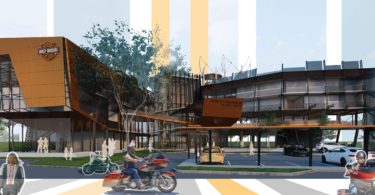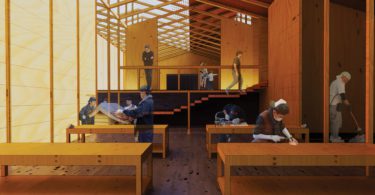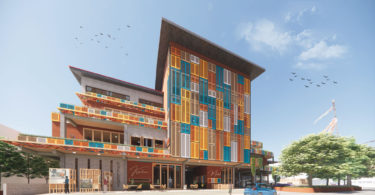The cultural values of the Portuguese Settlement— situated in an area along Sungai Ujong, Malacca— are slowly fading and being forgotten. Community values, economic growth, new developments and unjust treatment from the governing body are some of the few issues which may have caused this rich community to lose its cultural values day by day.
The fundamental question for the research was to explore how public spaces could contribute to the improvement of social interactions within the community and adjacent neighbourhoods. The idea of creating multiple or different public spaces is to provide a place for people to mingle, meander and socialise. It gels the public attractions with the public interaction spaces and consecutively public experiences.
This cultural and community-based project sought to enhance the continuing relationship between the Portuguese Settlement community and the Straits of Malacca by exploring sustainable ways to preserve traditional culture while managing development. Instead of the typical site analysis and measurement that are done at the beginning of every project, this project took a participatory approach to better understand the community.
LAYOUT
The ground floor comprises 10 restaurants; two culinary workshops; three cottage industries; three café kitchens; a microbrewery; an open space for a wet market; and a void deck. Level one consists of a community hall and an open space for microfarm and garden, while level two comprises 10 homestay units and a park.
COMMUNICATION WITH LOCALS
Before the start of this project, a group of semester one architecture students from Taylor’s University gave a presentation to the community members to propose two designs which were done based on the feedback of their expectations. The project was mainly driven by communication with the locals and the experience of their lifestyles during the site visit, whereby the qualitative data collected reflected the needs and expectations of the community.
Some studies were conducted during the site visit to identify local resources that were found around the site. After several interviews and communication sessions with the community leader and local fishermen, it was established that timber (cengal wood) was abundant at a nearby village and the project was designed mainly based on this finding. As the site is close to the sea, corrosion is one of the disadvantages that played a part in the design. To minimise corrosion, timber is only used to support the roofs of the structure, while the columns are made up of I-beams and subsequently concrete piling. Timber plays a large part in rejuvenating the sense of tropical architecture in the settlement, giving the community not only a sense of place, but also a local and Malaysian cultural identity.
SOCIAL DIMENSION PHYSICAL ASPECT ENVIRONMENTAL CONSIDERATIONS
The design philosophy was to create public spaces along the entire project that created nodes from one point to another. Each node signifies different types of public areas, i.e., public attraction, public interaction and public experience. These three public areas branches out to different types of public spaces such as boulevard, promenade and park. These public spaces are arranged in a manner whereby an individual can be brought from the beginning to the end in a journey of experiences. It can potentially facilitate social interactions within the settlement itself and the surrounding neighbourhood, allow both older and younger generations to communicate with one another, as well as create opportunities for job creation and skill learning. Hence, the project does not only benefit the community, but also generate a learning experience for visitors to know more about the Portuguese Settlement.
The project’s aim was not only to make a statement about the surroundings and become a sole attraction for visitors from all over the world, but also to be able to cater for the community and rejuvenate its rich culture. The objective was to design based on the site context where the building will not exceed a height of 15 metres. It is done in a more subtle manner by limiting the height to 14 metres and activity pockets are spread out throughout the site to emphasise the different types of public spaces.
The community has depended heavily on their fishing culture since they settled down in Malaya. The surrounding environment, especially the sea, has been a part of their lives. Therefore, the project’s aim was to provide long-term and sustainable facilities to preserve ecology in the region. It was designed to highlight the seafront and revive the fishing culture in a more vibrant environment.
School: Taylor’s University
Programme: Culture & Community Design Studio (CCDS) – Semester 1: Masters of Architecture
Project Name: Aldeia (do) Publico – The Public’s Village
Images/Photos: Bryan Yeoh Ern Thean










